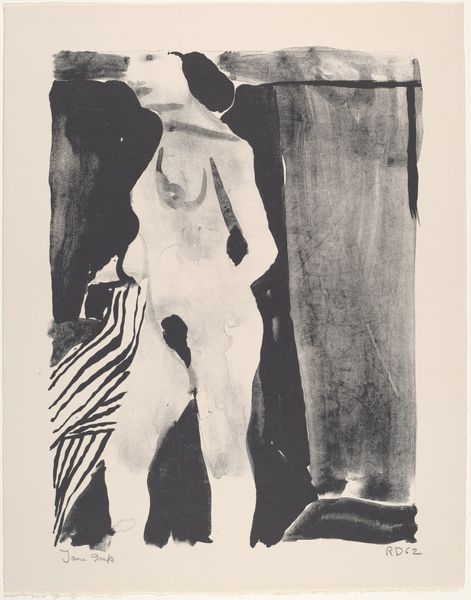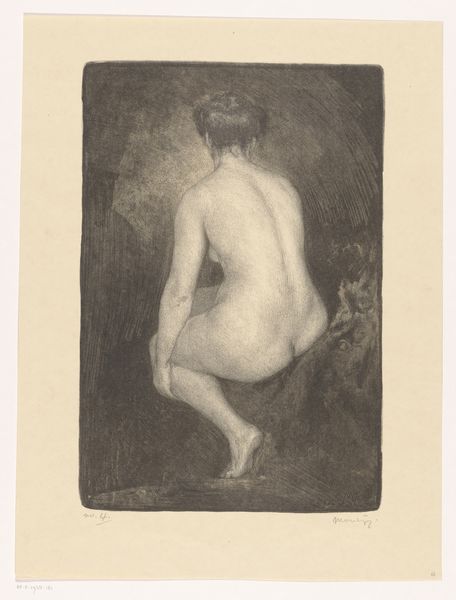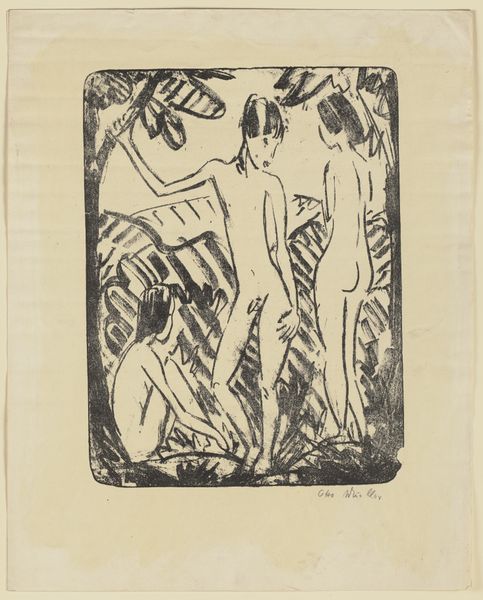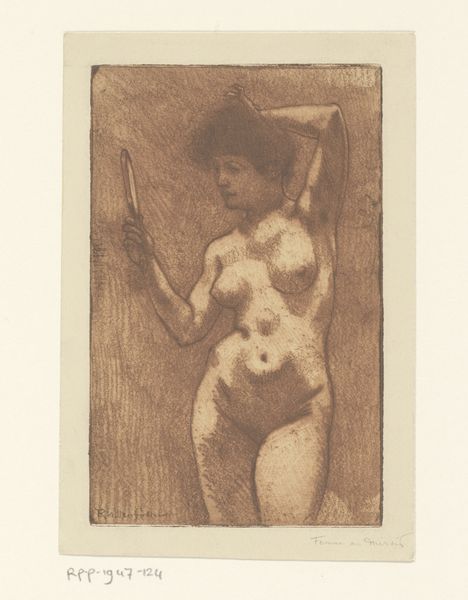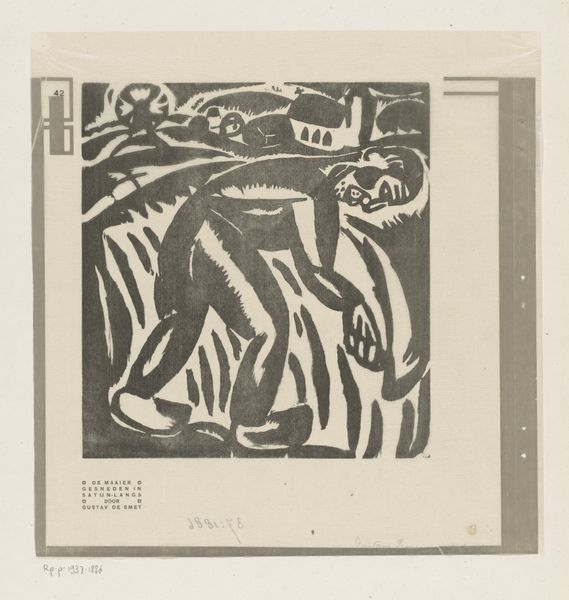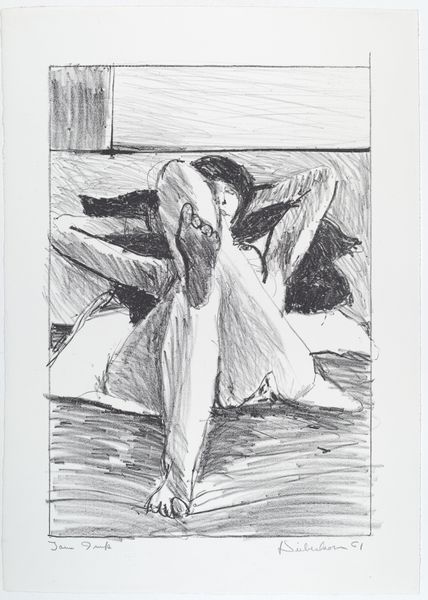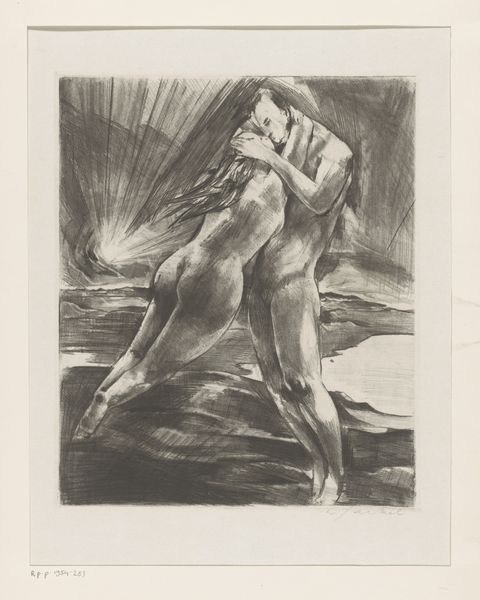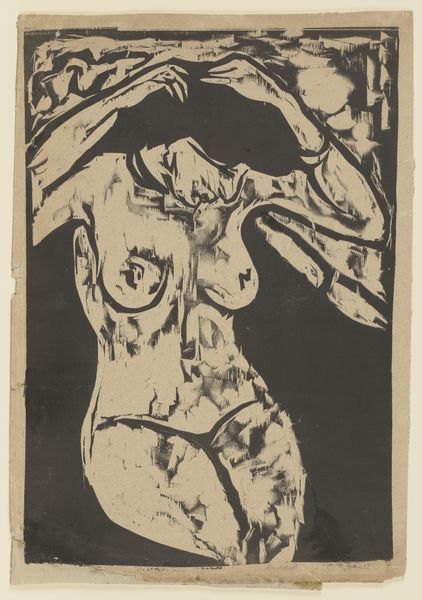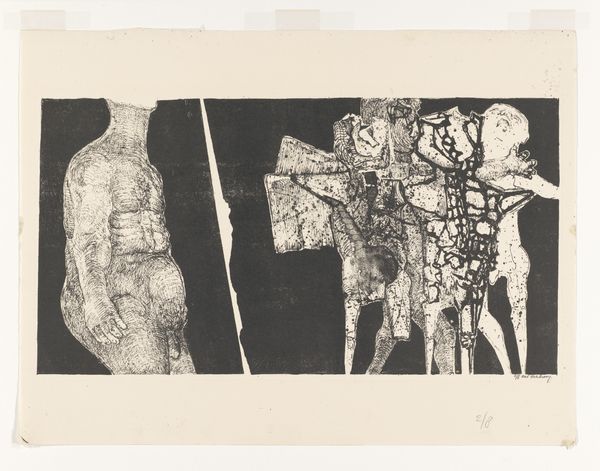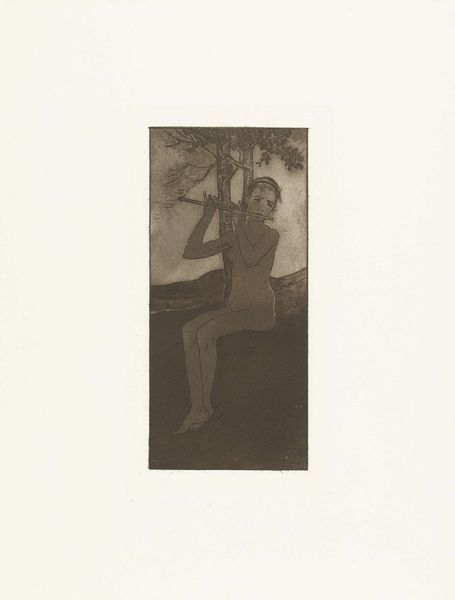
Bathers in Brittany, from the Volpini Suite: Dessins lithographiques 1889
0:00
0:00
drawing, lithograph, print
#
drawing
#
lithograph
# print
#
figuration
#
post-impressionism
#
nude
#
male-nude
Dimensions: 9 3/16 x 7 7/8 in. (23.3 x 20.0 cm)
Copyright: Public Domain
Curator: Paul Gauguin's "Bathers in Brittany," a lithograph from 1889, showcases his evolving style during a pivotal period. It's part of the Volpini Suite, now residing at the Metropolitan Museum of Art. Editor: It strikes me as raw, unfinished almost. The stark contrast of black and white emphasizes the figure but lacks a certain refinement I’d expect. What are your thoughts? Curator: That raw quality, I think, speaks to the printmaking process and its relationship to the burgeoning Symbolist aesthetic. Observe how the subject—a nude—exists not for idealization but rather as a study of form abstracted and simplified. Editor: I can see the deliberate reduction, yet my eye keeps returning to the artist's hand, quite literally. Notice how the textures were achieved. Those inky blacks surrounding the bather—achieved using the waxy crayon? What kind of labour and skill was involved? The whole suite, including this piece, served as something of a catalogue of new experiments, right? Curator: Precisely. We're witnessing the lithographic stone's inherent texture contributing to the final image, almost dissolving traditional lines into fields of tonal contrast. This challenges traditional academic rendering through a more schematic expression. Editor: Schematic indeed! One might also explore the socio-economic dimensions. It speaks of an industrial age and also relates directly to how printmaking democratized images and artistic ideas more broadly in fin-de-siècle Paris. Gauguin circulated this suite beyond traditional salon venues. Curator: I concur completely; considering it democratized and diversified access is critical. Looking at this image and understanding the labor, one must also observe the formal construction as symbolic itself. The gesture is of inward contemplation, reinforced by stark contrasts and closed form, almost as if he uses form to dictate our focus on feeling rather than narrative. Editor: Considering this piece alongside broader production of the time grants deeper insight, which can go well beyond the artist’s intentions to see its place within a wider system of value and image exchange. Curator: Seeing this print now, my appreciation is renewed by how much it deviates from classical norms yet establishes a solid visual foundation for Modernism's stylistic trajectory. Editor: Thinking of it as part of Gauguin's broader output reminds me of the inherent tension that always drove and complicated his work, bridging materiality and pure idea.
Comments
No comments
Be the first to comment and join the conversation on the ultimate creative platform.

